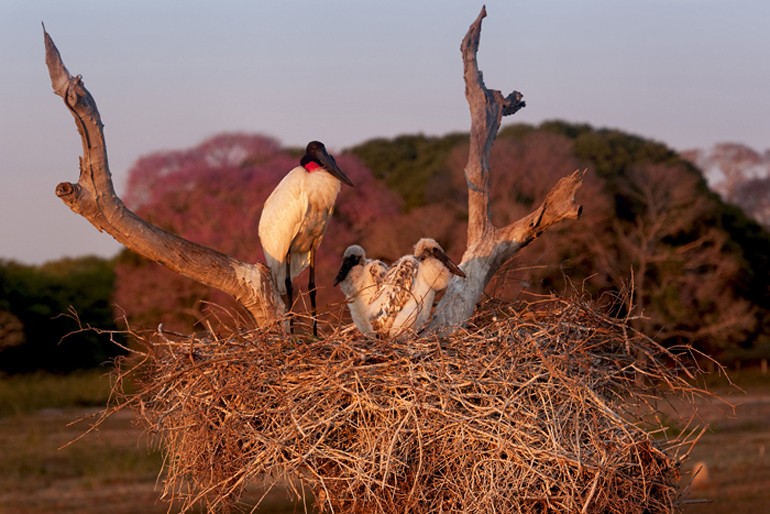
Often referred to as the Amazon alternative, the lopsided Pantanal, at 80,000 square miles (think Utah), is one of the world's largest wetlands. Translated from Portuguese roughly as the "swamp," the Pantanal is really an alluvial plain, flat as a flitter, so water meanders rather than flows during the wet season.
Seasonal rains arrive in November and, until March, inundate the Paraguay River and tributaries. Thus begins "the Full," when the Pantanal is a mosaic of verdant lakes and tree-studded islands. Caimans, wading birds, fish, and semi-aquatic animals such as tapirs and capybaras spread out across the lagoons. Hydrophobes such as ocelot, jaguar, deer, and cattle take to the high ground and try to stay dry.
Beginning in April the waters recede ever so gently west, toward the Paraguay River, and the land slowly begins to breathe again. A magical transformation takes place as the Pantanal morphs from boot-sucking bog into tallgrass prairie. Shrinking ponds become local bonanzas where wading birds feast on marooned fish. When the fish run out the birds flee to nearby rivers and streams.
The Pantanal would seem an improbable place for a cattle ranch, too wet and too wild. And yet for more than a century a unique cattle culture has evolved on giant ranches called fazendas, some a half million acres in size, that double as wildlife refuges. This ranching style is imposed by the extremes of wet and dry and protected by the relative isolation of the region. But that may all be changing. (next photo)